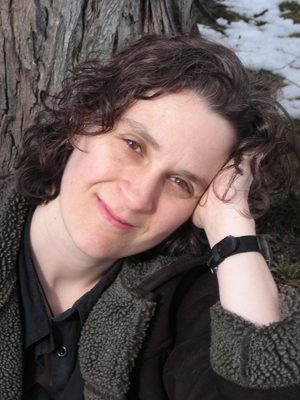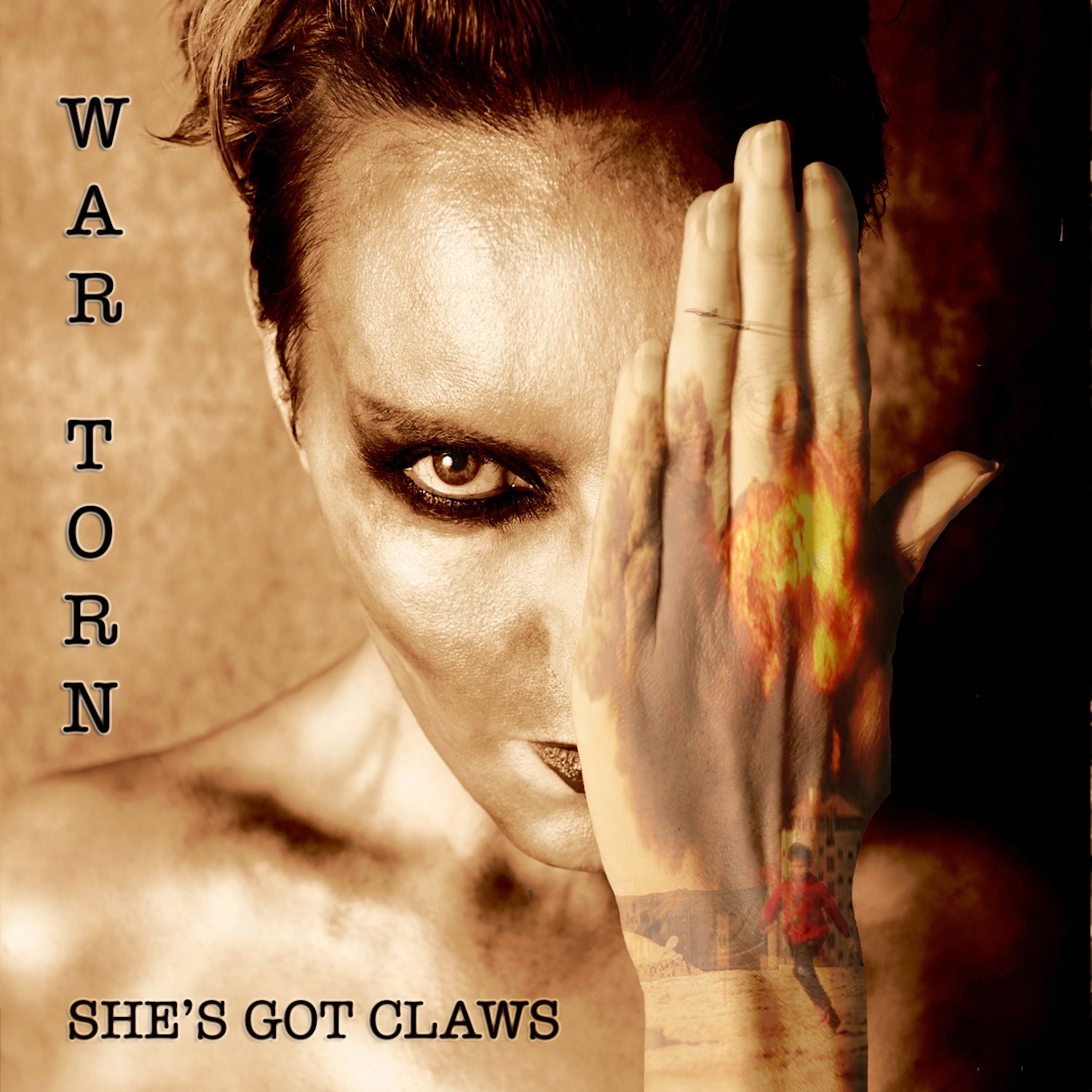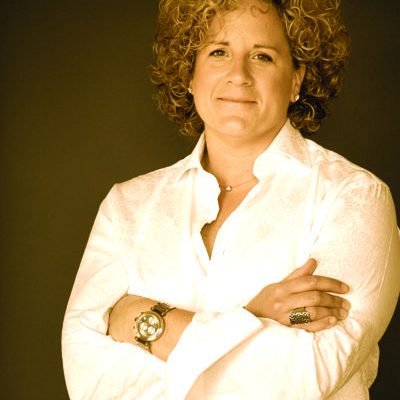
The media loves Jennifer McMahon. People called her “whip-smart,” and everyone from Entertainment Weekly to The Today Show to Amazon lauded her debut psychological thriller, Promise Not to Tell.
Her second novel, Island of Lost Girls—the chilling story of a woman who witnesses a kidnapping and must revisit a past crime to understand it all—hit No. 17 on the New York Times Best Seller list and a third, Tiki Girl is already tops with fans. Surprisingly, McMahon, who lives in Barre, Vermont with her partner Drea and their daughter Zella, is refreshingly nonplussed by all the attention.
Island of Lost Girls was number 17 on the New York Times Best Seller list. How does that feel?
It’s amazing. I’m still completely stunned. I still don’t believe it.
On Island, Rhonda is so completely caught off guard that she is unable to act when she sees what’s happening. Have you ever been that surprised by something?
I don’t think so, no. But I’ve obviously wondered what would happen if I were. The inspiration for Island of Lost Girls came when I had stopped for gas at a little town outside a state park in Vermont. I was standing there pumping my gas and I saw a woman pull in and leave her little girl in the backseat while she ran into the store. The car was running and of course, my imagination was going—because I’m a worst-case-scenario kind of person. [Laughs] I was absolutely convinced that someone was going to pull up and take this little girl. And I’m thinking, What am I going to do? What am I going to do? What if it’s a guy? What if it’s a big guy? What if there are several big guys? Will I still stand up and try to help the little girl? Then I thought, and what if it’s something really weird? Like, what if it’s Santa Claus? Or what if it’s the Easter Bunny? I would probably just be too freaked out and I would be paralyzed. [Laughs] I don’t think that’s ever actually happened in real life, but it’s certainly possible.
You’ve said that My Tiki Girl was the book you wish you had read when you were 13. Did you set out to write a book for teenagers?
I did not, no. Tiki Girl was written for an adult audience, and the first draft of it was much darker. One of the characters ended up dead, one was brain damaged, there was a rape and a teen pregnancy and it was really sort of dark. Gruesome, almost. I showed it to my agent and he said, “You know, I think that this could really work as a young adult book.” And I said, “Young adult book? I don’t even know what that means.” So I started reading some young adult fiction, thought about it and revised it specifically for that market, and I’m excited.
What about when you were 13? What books were you reading then?
I don’t know if it was when I was 13, probably around that time, I was really into S.E. Hinton. The Outsiders and all those books, I really loved those. I thought those were great. I was probably around 13, maybe a little younger, when I read To Kill a Mockingbird, and it just completely blew my mind. That was the book that made me realize I really wanted to be a writer. I reread it about every year or so, and I always take away something new from it…And then, I think I was a freshman in college when I read Rubyfruit Jungle, and that was the first gay or lesbian book that had a character like that. And I was blown away.
It’s amazing how the market has grown.
Yeah, it sure is. And now Rita Mae Brown is writing mysteries with her kitty cat.
You spent some time living in a cabin with no electricity or running water. Was that a stressful experience or a nice retreat?
A little of both. While we were doing that, we were trying to build our own house, which was the really stressful part. My partner and I almost never fight and we fought so much—it was a huge strain on our relationship. I think it was the combination of building the house and living like that, living with no electricity, water or bathroom, and having to hike into town.
Before you worked full-time as a writer, did you have an assortment of jobs?
I did. I studied poetry in school, so I figured that I’d spend the rest of my life being this poor struggling poet, and I was going to be delivering pizzas and doing whatever while I wrote poems and tried to have them published. And then—I was in graduate school when I wrote a poem that turned into, like, a long prose poem, and it turned into a short story, and it kept going. I was like, “Oh my God, I’ve got 100 pages. What am I doing? Is this a novel? What do I know?”
Did that novel turn into one of the ones that you’ve published?
It did not. That is the one novel that has not gone anywhere. It is sitting in the drawer and maybe it will one day, but that novel actually landed me my first agent. I was so excited. And that’s what inspired me to quit my job.
How long was it between quitting your job and the offers rolling in?
Oh, gosh. Years. [Laughs] And my agent actually dumped me eventually. She sent me a letter saying that it’s time that we part company and that she didn’t really do ghost stories, and the book just didn’t really work for her and she hadn’t had any luck selling my earlier two books. I was so absolutely devastated. I came really close to quitting. I thought this is it. I put everything I had into this book, and here was this woman who was my lifeline to the publishing world—she was going to make all my dreams come true—and she dumped me. I felt very sorry for myself, and I drank too much tequila. [Laughs]
Who do you think your audience is?
I know a lot of writers sit down and write a book thinking about who their audience is, and maybe I should be doing that, but I don’t. My audience is all over the place. I hear from high school students who are picking up Promise Not to Tell and Island of Lost Girls and absolutely loving it. I’m hearing from a lot of people who call themselves “nonreaders,” or people who never finish books, who are just completely engrossed, who actually take the time out of their day to write me and say, “Your book is the first book I’ve finished in 10 years!” I think that’s wonderful. And then I’m hearing from mystery-lovers, I’m hearing from people who enjoy a good coming-of-age [story] and stories with kids in them. So it seems to be all over the place. I think that when I sit down to write, I just write what I feel like, what compels me—what I feel like I would want to pick up and read. Promise Not to Tell became a mystery completely by accident. I didn’t intend to write a mystery, and a lot of people are calling me a mystery writer. I do write books that have mysteries in them, but I don’t really know a lot about writing mysteries. [Laughs]
Does it feel sort of marginalizing to be in that niche genre?
I’m just writing the books I want to write, and it just so happens that I discovered that I really like making terrible things happen to people on paper, and I really like putting the mystery stuff in there. I really like doing all the twists and turns and surprises. As I’m writing, I’m going along and I’m surprising myself, and I think that’s what I get a kick out of, and hopefully, that’s what my readers will enjoy, too.
Are you one of those writers who maps out a chapter plan or an outline before you create? Or are you creating completely organically, from A to Z?
With Promise Not to Tell and Island of Lost Girls—and Tiki, too—I did all three without an outline or any kind of road map…I just had the vaguest of ideas. Like, with Island of Lost Girls, I thought of the little girl and her mom pulling into the parking lot and I went home and that was what started the whole book. I had no idea where it was going to go. I think that’s part of the fun of writing for me—having no idea what characters are going to show up and where the story’s going to go.
You’re not just a writer—you’re also a work-at-home mom, too. How does that affect your work?
It affected my work a great deal. When I was pregnant, I had this idea that I was going to have this baby and I would be able to stay home and write and she would just play happily by my feet. And it never worked out. I learned to write in, like, 15-minute increments here and there. And we were going to be one of those families who never let our child watch any sort of television, and now it’s like, “Please, go watch a little public television! Go watch Reading Rainbow for a few minutes. I want to finish up this paragraph.” But I always carry a notebook or index cards or something with me wherever I go. Whether I’m taking her to playdates or whatever, I’m scribbling away as I’m pushing her on the swings.
There aren’t very many writers on the New York Times Best Seller list who are openly gay, or as matter-of-factly gay as you are. Did you ever have any concerns about being so open on your bio?
No, I didn’t. I figure, I am who I am, and if that drives people away or makes people judge me and not want to buy the book, then they’re the ones who are missing out.
It’s nice to see that it’s not having an effect on your bottom line.
Yeah, I think a lot of that has to do with living in Vermont. It doesn’t feel like a big deal to me. Drea and I are treated as a couple wherever we go. We feel pretty accepted here, and I think that has sort of flowed over into all aspects of my life.
What’s next for you?
I’m hard at work finishing up edits for the book that will come out in 2009, and it is tentatively titled Dismantled. The story is also set in Vermont. It’s about a group of four college friends who form a sort of band of outlaw artists called the Compassionate Dismantlers, who believe that true art is about taking things apart. They spend the summer after college together, and at the end of the summer one of them ends up dead. The book takes place nine years later, the rest of them sort of coming to terms with that. And there is a lesbian character—actually, there are a couple of lesbian characters in it.


